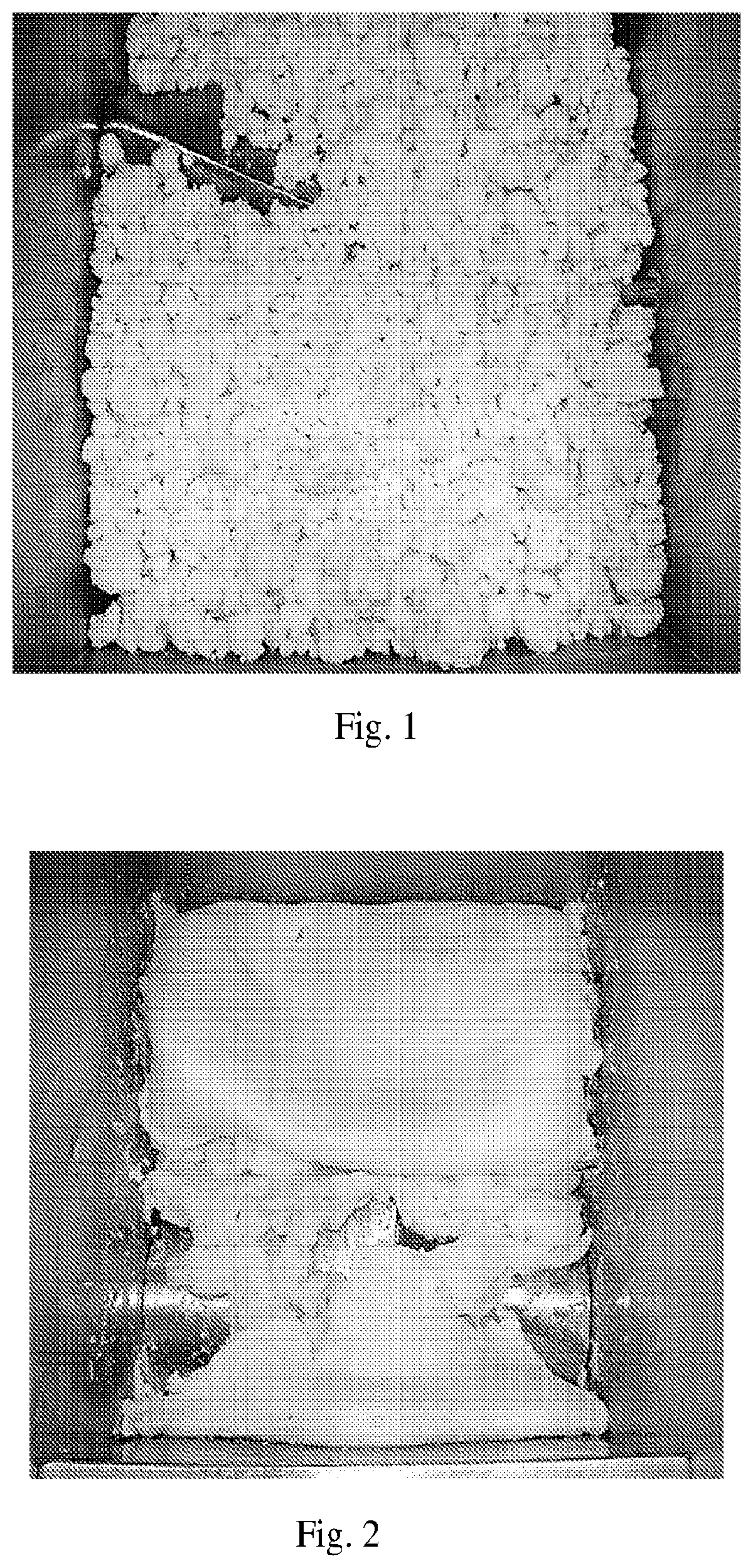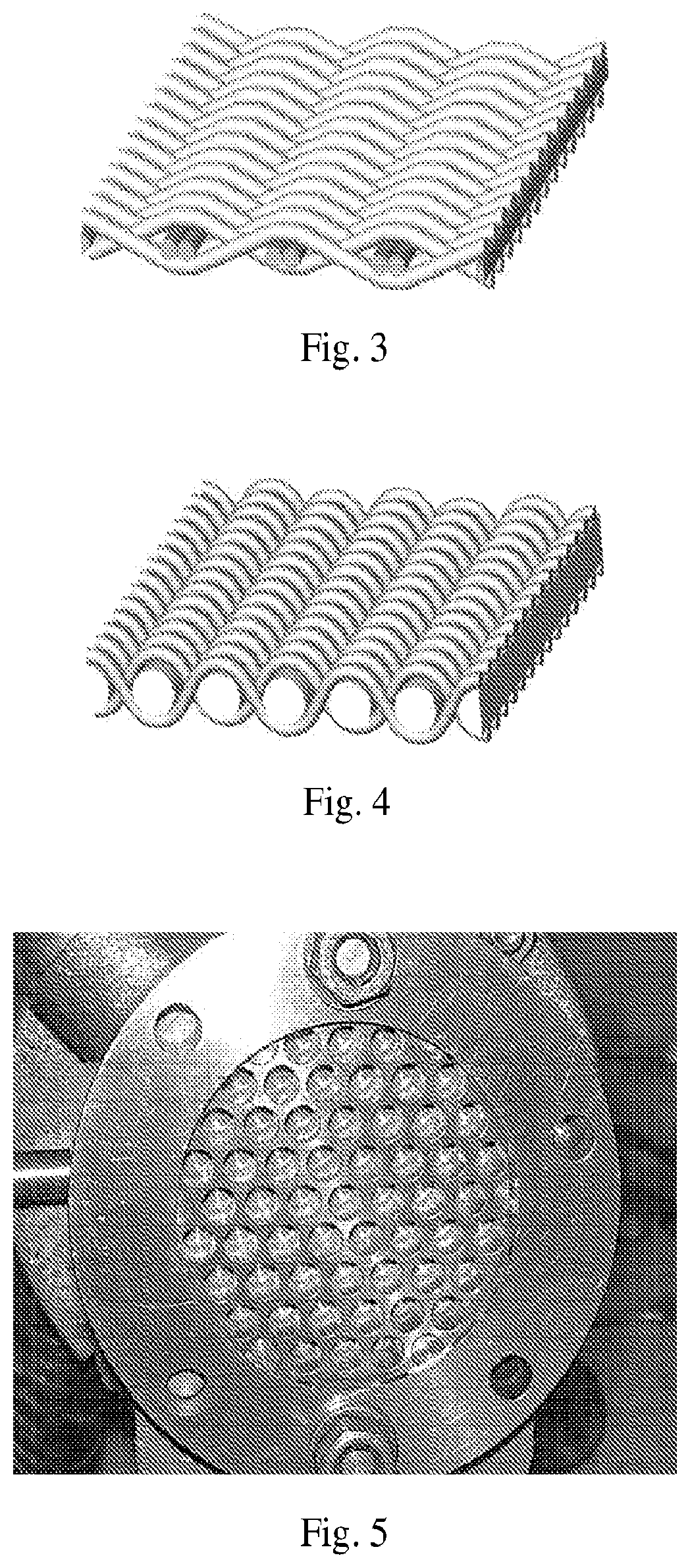Process for producing a water-soluble cellulose derivative having a reduced content of water-insoluble particles
a technology of water-soluble cellulose and water-insoluble particles, which is applied in the field of process for producing a water-soluble cellulose derivative having a reduced content of water-soluble particles, can solve the problems of inability to remove water-soluble cellulose derivatives, inability to meet the requirements of end-use applications, etc., to achieve the effect of reducing work, time and energy
- Summary
- Abstract
- Description
- Claims
- Application Information
AI Technical Summary
Benefits of technology
Problems solved by technology
Method used
Image
Examples
example 1
[0042]1.416 kg of a dry hydroxypropyl methylcellulose (HPMC) having a methyl degree of substitution DSmethyl of 1.92, a molar degree of substitution MShydroxypropyl of 0.24 and an Ubbelohde viscosity, measured as a 2 weight-% aqueous solution at 20° C. according to DIN 51562-1:1999-01 (January 1999), of 3.2 mPa·s were first filled in a 20 l fluidized-bed mixer, commercially available from Gebrüder Lödige Maschinenbau GmbH, Paderborn. Germany, as Lödige M 20 MK with an 1.5 kW engine. When the mixer was running at 230 rpm, 3.584 kg of ice-cooled water were subsequently sprayed into the batch of HPMC through a spraying nozzle. The spraying process took 5 min. Then the mixer was continuously allowed to run for further 20 sec. A moist cellulose HPMC resulted which formed a turbid, white mass containing dumpling-like particles of 0.5 to 2 cm diameter. FIG. 1 illustrates this mass of moist HPMC. This mass of moist HPMC was fed into a cooled kneader which was commercially available from the...
example 2
[0049]A HPMC having a methyl degree of substitution DSmethyl of 1.79, a molar degree of substitution MShydroxypropyl of 0.17 and an Ubbelohde viscosity, measured as a 2 weight-% aqueous solution at 20° C. according to DIN 51562-1:1999-01 (January 1999), of 45 mPa·s was produced in a known manner by reacting cellulose with alkaline sodium hydroxide to produce alkali cellulose and etherifying the produced alkali cellulose with methyl chloride and propylene oxide. The produced HPMC was washed with hot water and subjected to pressure filtration to produce a filter cake. The resulting HPMC filter cake had a water content of 40 percent, based on the total weight of the moist HPMC.
[0050]3.083 kg of the moist HPMC filter cake with a humidity of 40 percent was fed into the same cooled AMK Type IIU Tilt-Kneader as in Example 1, except that the kneader was cooled down to 12° C. During 30 sec. 1.917 kg of water was added leading to a HPMC of a water content of 63 percent, based on the total wei...
example 3
[0053]A HPMC having a methyl degree of substitution DSmethyl, of 1.92, a molar degree of substitution MShydroxypropyl of 0.26 and an Ubbelohde viscosity, measured as a 2 weight-% aqueous solution at 20° C. according to DIN 51562-1:1999-01 (January 1999), of 48 mPa·s was produced in a known manner by reacting cellulose with alkaline sodium hydroxide to produce alkali cellulose and etherifying the produced alkali cellulose with methyl chloride and propylene oxide. The produced HPMC was washed with hot water and subjected to pressure filtration to produce a filter cake. The resulting HPMC filter cake had a water content of 41 percent, based on the total weight of the moist HPMC.
[0054]3.56 kg of the moist HPMC filter cake with a humidity of 41 percent was fed into the same cooled AMK Type IIU Tilt-Kneader as in Example 1, except that the kneader was cooled down to 8° C. During 2 sec. 1.440 kg of water was added leading to a HPMC of a water content of 58 percent, based on the total weigh...
PUM
| Property | Measurement | Unit |
|---|---|---|
| pore size | aaaaa | aaaaa |
| pore size | aaaaa | aaaaa |
| pore size | aaaaa | aaaaa |
Abstract
Description
Claims
Application Information
 Login to View More
Login to View More - R&D
- Intellectual Property
- Life Sciences
- Materials
- Tech Scout
- Unparalleled Data Quality
- Higher Quality Content
- 60% Fewer Hallucinations
Browse by: Latest US Patents, China's latest patents, Technical Efficacy Thesaurus, Application Domain, Technology Topic, Popular Technical Reports.
© 2025 PatSnap. All rights reserved.Legal|Privacy policy|Modern Slavery Act Transparency Statement|Sitemap|About US| Contact US: help@patsnap.com


